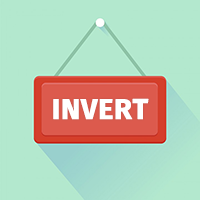Electric motor
An electrical machine is an electromagnetically device based on electromagnetism enabling the
conversion of electrical energy, for example in work or mechanical energy. This process is reversible
and can be used to generate electricity:
Electrical machines producing electrical energy from mechanical energy are commonly referred to as
generators, dynamos or alternators depending on the technology used.
Principle of operation of electric motors
We know that 2 magnets attract the opposite of their polarization:
It is possible to artificially create a magnet by feeding an electrical wire wound around a metal core:
The North-South polarization will depend on the current flow direction. Now, in alternating current, one can consider that the direction of the current reverses every 1 / 100th second.
Let us arrange a permanent magnet, free in rotation before a fixed artificial magnet whose polarization is inverted continuously. Since the South and North poles constantly attract one another, one imagines that the permanent magnet may be rotated (or at least maintain it there).
In our diagram above:
The permanent magnet is rotated: we will call it the rotor.
The assembly is an electric motor. One can imagine that it could drive for example a ventilator:
Synchronous motors
In our "engine", the "rotor" rotates as fast as the stator reverses its polarities. One will speak of a "synchronous" motor (same speed of rotation for the stator and the rotor).
For the alternating current distributed in Europe and Asia, the direction of the current reverses every one hundredth of a second (1 / 100 ths ).
This is due to its mode of manufacture and to the speed of rotation which has been chosen for the generators which produces it.
It is said to have a frequency of 50 Hz (Hertz), because it finds the same direction every 1 / 50th of a second.
The rotor tries to adjust its fixed polarity on the stator. Every 100th of a second, he will have completed ½ turn, ie 1 full turn in 1 / 50th of a second.
Obviously, the trained fan will do the same.
Once started, one way or the other, the rotation will take place as long as the stator is energized.
Nombre de pôles et vitesse de rotation
The stator of the motor studied in the previous paragraph had a single winding and therefore two poles.
Q1: How many turns will the rotor take in one second?
Every 1 / 100th of a second, each pole reverses its polarization causing the rotor to traverse a 1/2 turn.
APPLICATION
-
1: How many turns will the rotor take in one second?
-
-
-
-Explanation:
Every 1 / 100th of a second, each pole reverses its polarity causing the rotor to travel a 1/2 turn.
So the rotor runs a turn in 2 × 1 / 100th second, either in 1 / 50th of a second or 0.02 [s].
It therefore performs 50 revolutions per second (1 / 0.02).
-Q2: How many turns will the rotor make in one minute?
-
-
-
-
-Explanation:
The rotor will therefore perform 50 revolutions per second therefore 50 × 60 = 3000 [RPM]
It is possible to design a stator equipped with 4 poles (2 coils).
Every 1 / 100th of a second, each pole reverses its polarization causing the rotor to travel ¼ turn.
Q3: How many turns will the rotor take in one second?
-
-
-
-
-Explanation
Every 1 / 100th of a second, each pole reverses its polarization causing the rotor to go through a 1/4 turn.
So the rotor runs a turn in 4 × 1 / 100th second, either in 1 / 25th of a second or 0.04 [s].
It therefore performs 25 revolutions per second (1 / 0.04).
Electric motor
4/
5
Oleh
Unknown

